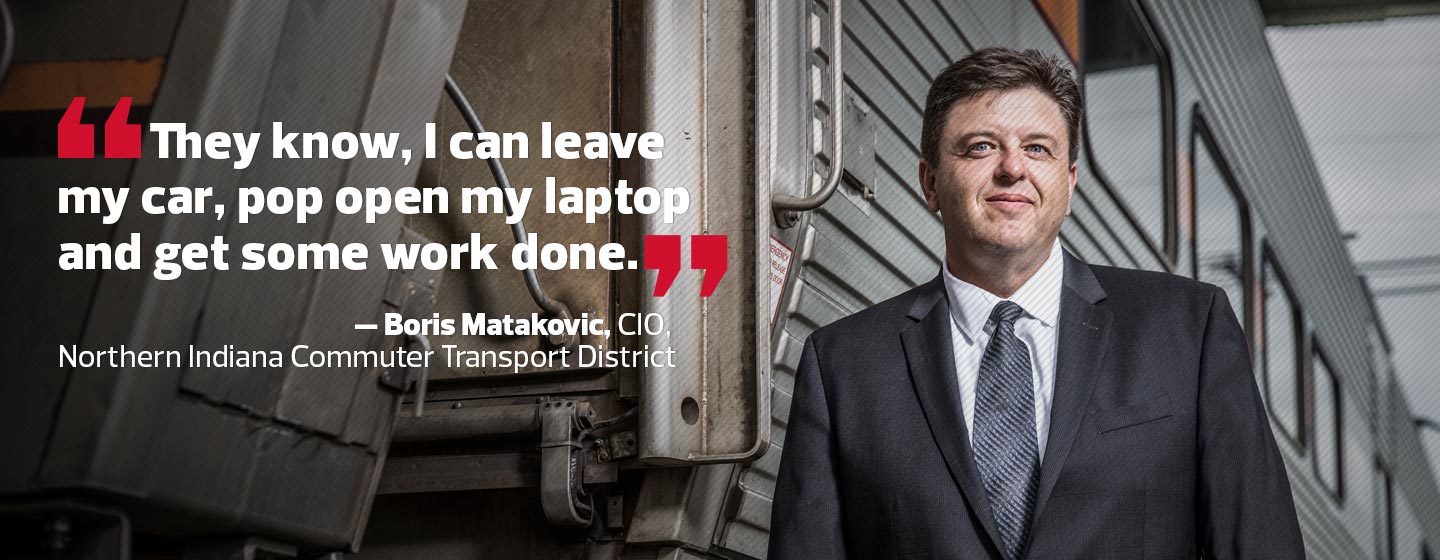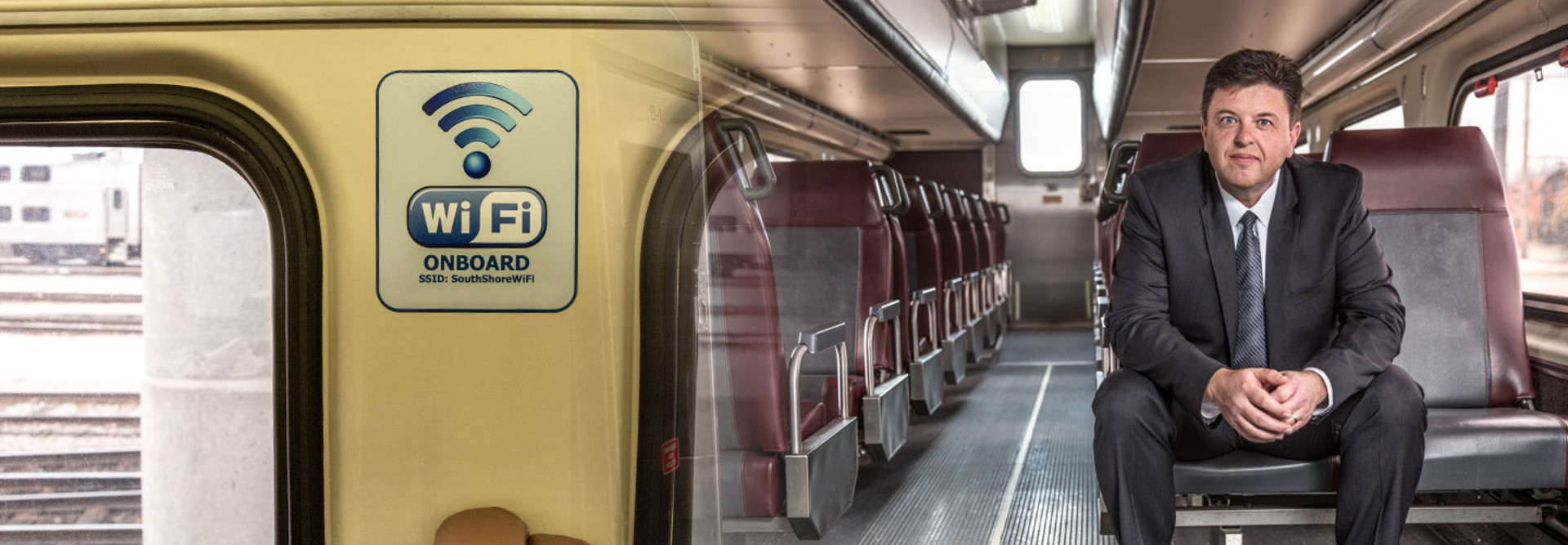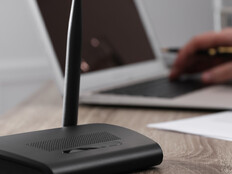How States Are Working to Improve Wi-Fi Access on Trains
For several years, the Northern Indiana Commuter Transportation District tried, to no avail, to offer Wi-Fi to passengers on the trains it operates between South Bend, Ind., and Chicago.
“The business model just doesn’t make sense,” NICTD CIO Boris Matakovic says of the previous arrangements, in which outside partners either charged for Wi-Fi or tried to make money with advertisements. “They just couldn’t recoup their costs.”
Finally, managers at the rail line took matters into their own hands. Last September, Matakovic’s team installed Digi Transport WR44 cellular routers on 10 rail cars and contracted with AT&T for 4G connectivity. Riders can now reliably check their email and catch up on the news during their daily commutes. Thanks to positive feedback from passengers, NICTD is expanding Wi-Fi throughout its train cars.
“I’ve ridden the train dozens of times, and it’s perfect,” Matakovic says. “It doesn’t drop. It’s good enough for email and Facebook. It’s not that great for streaming, but it’s meant really as a work tool.”
Although Wi-Fi has become ubiquitous in other settings, ranging from coffee shops to city hall, wireless networks on trains have lagged. This stems from the difficulty of maintaining connectivity for mobile devices that are hurtling down rail tracks at 80 miles per hour, and is also partially because of the limited return on investment of public-transit Wi-Fi deployment. Still, many transit agencies are beginning to explore or implement Wi-Fi, not only as a service to passengers, but also as a way to link business systems such as mobile ticketing, digital signage and security camera monitoring.
Giving passengers the same sort of digital experience they’ve come to expect elsewhere is key to retaining existing riders and attracting new ones, says Matakovic. “It becomes a convenience for people. They know, ‘I can leave my car, pop open my laptop and get some work done,’ ” he says. “It’s a more productive day.”
Why Wireless Makes Sense for Transportation

While passenger Wi-Fi itself may not be mission-critical for public train lines, transit agencies can leverage their wireless infrastructure to accommodate a number of other functions.
NICTD may eventually use Wi-Fi to remotely monitor train security cameras, send signals to digital signage and enable automatic passenger counting systems.
“The way you get funding is your ridership, so it’s very important to get good, accurate numbers,” says Matakovic. “We hand-count right now, for which the accuracy is — who knows? Automated counting will be really, really nice.”
In California, the Santa Clara Valley Transportation Authority operates buses and light rail throughout Santa Clara County. Train riders use the provided 4G Wi-Fi service to download more than 2 terabytes of data per month, but the agency also utilizes the connection for vehicle location tracking.
The authority is also working to use the Wi-Fi connection to monitor video, says Chief Information and Technology Officer Gary Miskell. In the future, Wi-Fi will also likely facilitate mobile ticketing and mobile point-of-sale systems.
“Taking credit cards and mobile ticketing are going to be the norm,” Miskell says. “Every vehicle will need to be connected all the time.” The agency already has a mobile ticketing app, but the app currently requires drivers to look at the electronic ticket and visually verify it. “In the future, that will be done using a cellular connection.”
Wireless on Wheels
Trains aren’t the only public transit vehicles adding wireless connectivity for passengers — public buses are also getting onboard. Both the Utah Transit Authority and the Santa Clara Valley Transit Authority, for example, have or are installing Wi-Fi on some buses.
One leader in this space is San Antonio’s VIA Metropolitan Transit system. Last fall, the Texas agency upgraded from 3G to 4G wireless and made it available to the organization’s entire fleet and facilities. The move made VIA the largest public transportation provider in the country to offer 4G Wi-Fi service systemwide.
“San Antonio remains committed to being a world-class city,” said Henry Cisneros, chairman of the San Antonio Chamber of Commerce, when the upgrade was completed. “And certainly, transportation and technology are two important components of great cities.”
Fiber and the Future of Train Wi-Fi
Some experts say that 3G and 4G cellular connectivity may prove to be unwieldy for public transit. Barry Einsig, global transportation executive for Cisco Systems, says the coverage and capacity aren’t there. As the already limited capacity from these solutions is divided between more users, the connection slows down.
“That’s the fundamental technology challenge, and the business challenge,” he adds.
Einsig says the future lies in trackside fiber installations with wireless access points (APs) that point beaming signals into train cars. Cisco is exploring this nascent market and has demonstrated the ability to provide a 100-megabit-per-second connection to a train traveling at 100 miles per hour.
While installing trackside fiber and APs is much more expensive than connecting trains to cellular signals, Einsig predicts that train lines may lay fiber to support business uses or safety and control systems, and then make passenger Wi-Fi available using that infrastructure.
Meanwhile, the Utah Transit Authority is actually moving from fiber to cellular for the time being. The agency has offered Wi-Fi to passengers on its commuter rail lines since 2008, using WiMAX radios on towers to deliver the signals to train cars. The infrastructure has aged out, however, and later this year the agency will replace it with 4G connectivity.
Clair Fiet, UTA’s chief technology officer, says that the decision to go with a 4G solution was motivated in part by budgetary concerns, and that the transit authority may convert back to a trackside solution later on. As part of the upgrade process, the agency is installing new APs on a small section of track to test the performance of a new trackside solution. Depending on the results, the agency may seek funding to update its fiber network and install more towers and APs, Fiet says.
“The reason we’re backing off on trackside right now is because of the proven technology of cellular,” Fiet says. “We’re using this as a measure to alleviate some of the customer complaints about the existing Wi-Fi. We’re buying time. That gives us a year or so to try out this other technology.”









